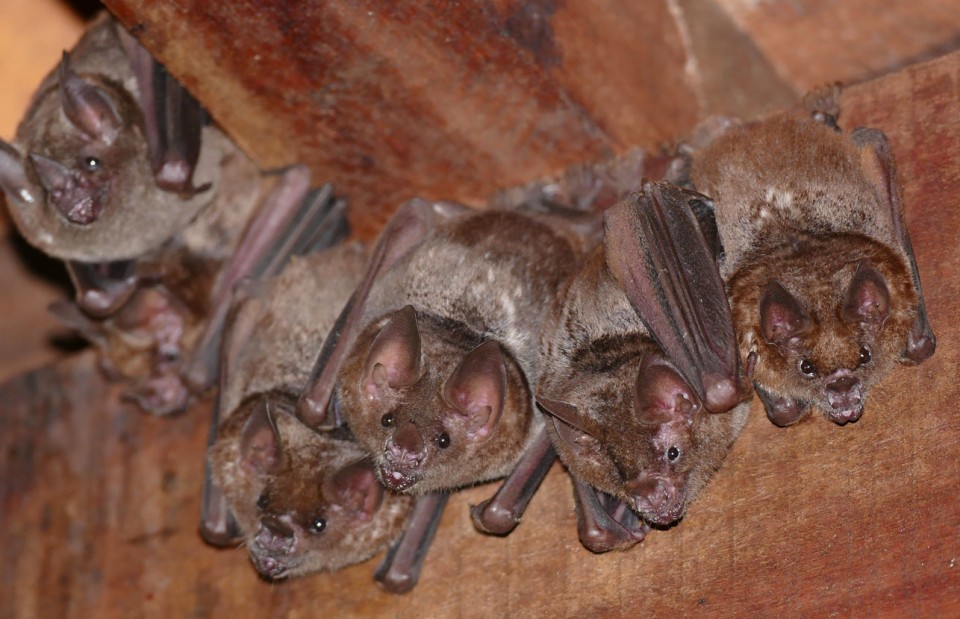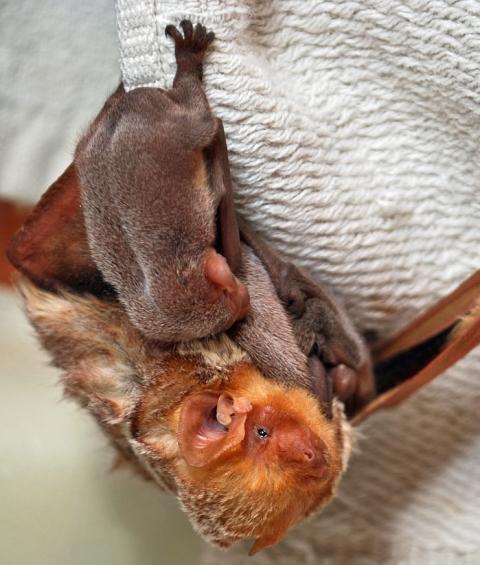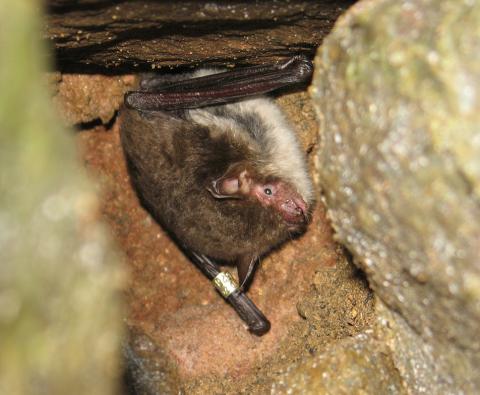Bats - Breeding Biology
Like all mammals, bats practice internal fertilization and give birth to live young. In fruit bats, females don’t reach have their first litter until they’re about two years old, despite being sexually mature at about 18 months old, and can have a single or multiple oestrus cycles per breeding season, depending on species. A report published by the Lubee Foundation for the American Zoo and Aquarium Association Bat Taxon Advisory Group (AZA BatTAG) in North America back in 1995 documented a possible case of sperm storage by a female Indian flying fox (Pteropus giganteus) who became pregnant nine months after having been moved to a single sex enclosure. Depending on species, fruit bats gestate for anywhere between 105 and 210 days (3.5 to 7 months) following a series a mating period that begins in February and peaks in April. Alternatively, the bats may copulate in the autumn and give birth in the spring, or copulate in June or July and delay implantation until November so that births occur the following spring.

Fruit bat courtship typically involves wing-flicking and vocalization that, if successful, lead to a brief mating period with a quick ejaculation. It should be pointed out that fruit bats exhibit terrific variation in their mating and birth times according to species. Straw-coloured fruit bats (Eidolon helvum) in Uganda and Siberia, for example, mate between April and June, delaying implantation so young are born eight or so months later, between February and March, to coincide with the rainy seasons. Conversely, the Egyptian fruit bat (Rosettus aegyptiacus) mates between June and September and young are born between October and December. AZA BatTAG provides a detailed description of the moment of birth and I would recommend a visit to their site if you’re interested in learning more.
During the birth, which may last from a couple of minutes to a couple of hours, the female hangs upside down by her thumbs and strains hard. The mother closes her wings to protect her newborn from falling and the infant then clings to its mother and is guided to the nearest available nipple. Unlike most bats, fruit bats are born with fur and some will have their eyes open immediately after birth; those that aren’t usually open their eyes within two weeks. Dependent on species, the young will be weaned within four months.

Microbats exhibit a somewhat different reproductive itinerary to that seen in their megabat relatives, although, as before, times of courtship, mating and parturition vary according to species. According to Phil Richardson in his book Bats, having aroused from hibernation, male bats are “keen to mate with any bat of the same species”. Indeed, a single male microbat may mate with as many as 30 females; generally during the autumn. Females will often store the sperm for several months – in his 1995 book, Bats of the British Isles, A. A. Wardhaugh notes that sperm may be stored in the uteri over the hibernation period, until the spring when the female will produce ova and fertilization can take place.
Gestation in microbats is variable and related to ambient temperature, with females becoming torpid under cold conditions and development of the embryo slowing down, and the size of the bat; the larger the bat, the longer the gestation. Ergo, gestation can vary from one to eight months with a single pup (twins are rare) born in June or July. Tropical bats may produce two litters per year, although one is the norm. At birth the pup may be as much as one-quarter the weight of the mother and is altricial (naked, blind and totally dependent on its mother); as with megabats, females give birth whilst hanging upside down and will create a “safety net” with her wings or tail membrane to prevent the infant falling. Young are left in a crèche while the females move off to hunt; the mother can detect the high-pitched squeak of her baby amongst the cacophony of noise upon her return.
Microbat young are usually weaned within about three weeks and begin their flight preparations shortly afterwards (about August). Vampire bats tend to be the exception, gestating for up to eight months and producing a pup that will be airborne after about four months. Young are usually independent of their mother by late summer and must feed well (often increasing their body weight by more than one-third) if they are to lay down sufficient energy reserves to hibernate. Most British bat species won’t become sexually mature until they are two years old.

As I have already mentioned, the timings of the various mating components vary according to the species in question, but to give an idea of the cycle it is probably easiest to look at one of Britain’s most prolific bat species, the common pipistrelle (Pipistrellus pipistrellus). In this species, mating occurs from August to late November and hereafter sperm is stored in the uterus until April, when ovulation and subsequent fertilization occurs. Births tend to be around June to mid-July, although occasionally pups are born as late as August if weather conditions are favourable. The newborn pup will weigh only one or two grams and will have its eyes closed for the first three to five days. The neonate is fed solely on milk from its mother until it is about six weeks old, after which it can forage for itself. Most British bats seem to follow a similar sequence. Our resident bats will generally begin to establish a breeding/mating roost during April and May and the number of females in these colonies can range from about 15 in the serotine (Eptesicus serotinus) to 200 in the Natterer’s bat (Myotis nattereri).
Intriguingly, the presence of a clinging infant doesn’t appear to hamper the mother's agility. In a fascinating study in the journal Behavioural Processes in 1998, Johnson Balasingh of the Madurai Kamaraj University in India and four colleagues studied the birth and mother-infant relationship of the Indian false vampire bat (Megaderma lyra). According to Balasingh and his co-workers, the ability of nursing females to get about and find food seemed unaffected by their babies, which clung to their mothers continuously for a week after birth. Balasingh et al.’s study also found that nursing females had two distinct bouts of foraging: one immediately following emergence from the roost at dusk and another during their return to the main roost in the pre-dawn hours.